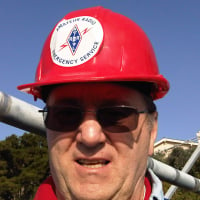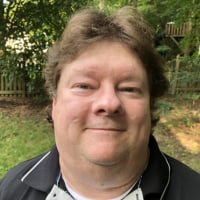SmartSDR v3.7.4 and the SmartSDR v3.7.4 Release Notes | SmartSDR v2.12.1 and the SmartSDR v2.12.1 Release Notes
SmartSDR v1.12.1 and the SmartSDR v1.12.1 Release Notes
Power Genius XL Utility v3.8.8 and the Power Genius XL Release Notes v3.8.8
Tuner Genius XL Utility v1.2.11 and the Tuner Genius XL Release Notes v1.2.11
Antenna Genius Utility v4.1.8
Need technical support from FlexRadio? It's as simple as Creating a HelpDesk ticket.
CESSB Questions
Answers
-
"But with a complex waveform with harmonic content, the resulting phase shifts by 90 deg puts their sum into the very thing that the "phase rotator" was trying to undo. So perhaps it won't work with SSB?"
For voice, I don't think it matters. The Hilbert transform is already performing a phase scrambling function. However, that's not to say phase scrambling won't have some other positive effect or behavior on an audio processing chain ahead of the SSB modulator. For example, it may be beneficial to establish symmetry before audio baseband clipping or fast limiting occurs.
Paul, W9AC
0 -
I think I just said that... I would be shocked to find that the Hilbert transform is applied directly to the microphone input signal, and that compression and limiting occurs solely in the RF stage. But then maybe I don't properly understand the Flex architecture.0
-
I went back and re-studied David's paper on CESSB in QEX. As a physicist, I know there is no free lunch. While he shows a measurement at the end of the paper showing higher effective average output power under CESSB compared to a "fast acting ALC", that only proves that CESSB is more effective at packing distortion product power into the pass band than this particular ALC.
Once you have a full amplitude signal coming in, neither one can produce stronger actual voice components, but rather, have different ways of generating and packing in additional distortion products into the passband.
No details were provided about how the ALC really behaves, and another design might exhibit entirely different character. ALC is attempting to lower the input drive to control output power to control RF IMD generation, and its recovery time might be a tad slow. CESSB appears to pack in more distortion products and so uses up more RF power.
So the question I have is several fold:
1. apparently these distortion products are harmless, at least in the noisy environment of HF radio, is this in fact true?
2. does packing in these additional distortion products really help you punch through to the other side?
3. would non-clipping baseband processing be just as much, less, or more, effective than forcing a controlled clipping with either of "fast acting ALC" or CESSB?
It might just be the case that the CESSB algorithm is a "better" (?) way of controlled clipping, without the attack and recovery periods found in an ALC system.
A lot of the answer really depends on how we hear speech, and can't be answered by making linear measurements. So I'm really asking people who have used CESSB how their experience with it has gone?
73 de Dave, N7AIG
0 -
Reports I have been getting from DX. Stations is that my audio sounds much louder and has a very definitive punch to it with much discernable distortion on the DX position. I don't use. The other position0
-
I have a rag chew profile that I use Proc I either NOR or DX, and I have a slightly narrower profile for DX/pileup busting that has boosted the highs a BIT and has PROC in DX+ . The DX profile has proved to be MUCH more effective both in busting pileups and in being heard when I am weak and in the noise. And when running W1AW/9 and CENT I consistently received good audio reports. Even on DX+ there seemed to be little objectionable distortion. However one of my ESSB audiophile friends noted that he could tell I was in DX mode and didn't like it, but he doesn't like anything less than 4.5 KHz wide with full BBC sound.0
-
Yes, I did a bit more digging last night and found the Tong paper. In there he shows a graph that describes how the peaks in voiced audio occur only rarely, compared to the more prominent vowel phonemes. So any distortion is likely to be very short lived, and these processing schemes do achieve some substantial boosting of the vowels.
But I also found another paper by Leif, SM5BSZ
http://www.sm5bsz.com/dynrange/dubus405/dubus405.htm
In there he shows some very interesting results. For one thing, it appears that all current transceiver manufacturers fail to heed the knowledge provided back in the 1980's by Sabin, et al, wherein he describes the need for a dual ALC system: one very fast acting with 0.1 s recovery, and only 3 dB range, to handle the re-peaking that occurs in SSB when you re-filter the processed RF to remove IMD and harmonics caused by clipping, and another longer acting one, wide dynamic range, to manage overall power levels with respect to temperature, aging, power settings, etc.
In particular he shows that re-peaking must occur as a result of post processing filtering, since you can only be flat-topped if you hold onto all the harmonics produced by clipping.
But back to CESSB... that avoids overt clipping, per se, but surely produces distortion products within the audio pass band. Again, these would be short lived peaks. You can see that this is so by simply examining his envelope shapes after processing. There is a predistortion of the envelope to avoid the production of clipping products.
While Leif shows the benefit overall of RF clipping, or intentional distortion, CESSB appears to be a way to overcome the lack of the fast acting ALC. Interestingly, RF clipping produces essentially zero distortion on pure tones, pairs of tones, and glottal (Guassian) pulses. CESSB will go ahead and distort these waveforms too.
Leif also provides the kind of data that you really need to see... namely, a measurement of speech recognition effectiveness versus SNR, for a variety of processing methods. And without doubt, (not comparing CESSB) he shows that 15-20 dB of RF clipping compression is the most effective overall, possibly coupled with audio compression to even out 10 dB of mic-speaker distance and gross speech level variations.
But it is interesting to hear the comments of phone ops. I almost never talk over the air, so thanks for your feedback!
73 de Dave, N7AIG
0 -
BTW... along the way, I ran across a little gem for RX of SSB voice. It seems to work pretty well to cut down on trash noise in the passband.
Voices typically exhibit a trough between 700 Hz and 1400 Hz, which lies between the main formants of speech. So notching out that region removes incoming noise that carries little intelligence.
- de N7AIG
0 -
OK!!!! Loud is good . IMD that is generated is however bad . Distortion is also bad . Opposite side band **** out is bad . All knobs to the right is bad .
Using ESSB for DX is just poor radio practice. Why Because the majority of DX stations receive no larger than 2.8 wide Most listen Far smaller than that . (Shorten that Band pass to 2.8 and add the DX+ see the real difference)
Here is the real deal. Fixed radio compression or One adaptive process containing the Audio spectrum is not the solution. Granted this is what the radio compression levels give us.
If you are going to project your SSB audio (LOUD) by adding compression The correct way to attain the desired or best results is to stage the events by various frequencies within your audio band pass .
YEP not one lump constant but the sum of compression indexes along the audio frequencies that will Add to the total audio package .
Now most of that increased IMD is derived from LOW frequency enhancement .
If you don't believe just reduce that 700 HZ tone in your 2 tone test and see the difference in the IMD .
Since I am now working DX stations running Loud audio , Also clear signal audio I can tell you all that You want more DX put that power into the band pass .
By the way I have not found any other way to accomplish this but with Electronic audio processing .
Flex you want to lead the pack put adaptive frequency control on compression . Add slope , Q ., and +/- gain . WOW now were talking
0 -
Dear Dale,
As I read your posting, I thought he is just like in what I want to accomplish! Would you tell us what your recording studio ham friend suggested as the preamp. I can probably guess, but it is better if you inform us. I know this is an old thread and a 2 year old posting. Apologies for that. Thanks and 73.0 -
I use a StudioProjects VTB1 V Series mic preamp with my 6700.0
-
Thanks Tim for letting me know what you use. So many choices of microphones and processing equipment. I run the Flex 6300.
0 -
Hallo Oms,
I am new to this forum. The reason for this is that I am interested in using CESSB with an external processor like Dave is writing in his QEX article. I am looking for a hardware recommendation and software also. CESSB is in use here for years and I am very satisfight with it. Now I want to use it in combination with SDR Console. Can you give me some hints about hard- and software.
Thanks in advance.
Regards
Andreas, DL5CN0
Leave a Comment
Categories
- All Categories
- 245 Community Topics
- 2.1K New Ideas
- 490 The Flea Market
- 7.4K Software
- 5.9K SmartSDR for Windows
- 135 SmartSDR for Maestro and M models
- 327 SmartSDR for Mac
- 243 SmartSDR for iOS
- 224 SmartSDR CAT
- 163 DAX
- 347 SmartSDR API
- 8.5K Radios and Accessories
- 6.9K FLEX-6000 Signature Series
- 767 Maestro
- 42 FlexControl
- 836 FLEX Series (Legacy) Radios
- 727 Genius Products
- 392 Power Genius XL Amplifier
- 251 Tuner Genius XL
- 84 Antenna Genius
- 222 Shack Infrastructure
- 149 Networking
- 370 Remote Operation (SmartLink)
- 118 Contesting
- 582 Peripherals & Station Integration
- 116 Amateur Radio Interests
- 811 Third-Party Software

